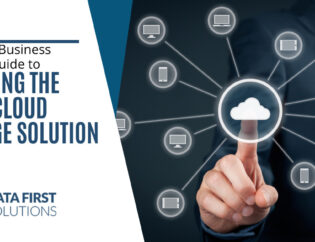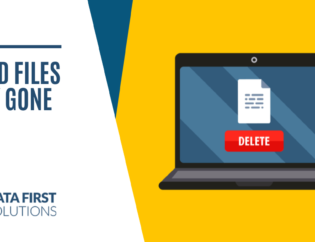
The pandemic has also caused a huge surge in cyberattacks, including:
- 72% increase in malware
- 77% increase in ransomware campaigns
- 50% increase in mobile attacks
What’s the typical first point of attack? A network endpoint like your computer or laptop.
Attacks on your PC come from things like phishing emails, malicious websites, downloaded programs, and desktops apps containing malware. Once you get a virus, ransomware, spyware, or other type of infection, you can end up with sensitive details and passwords being stolen, compromised online accounts (Amazon, iTunes, online banking, etc.), and other costly problems.
It’s important to take the proper IT safeguards to stay protected whether you have a Windows or Mac device. This includes employing a layered strategy of multiple device protections.
Device Firewall
Networks have firewalls, but it’s important to also use one on your computer. A device firewall monitors and filters network traffic to your device and can block anything that is malicious.
In Windows 10, Window Defender Firewall is built in and can monitor domain, your private network, and public network traffic. Using the settings, you can block malicious apps and receive notifications of any suspicious traffic.
In macOS, you can find the default Firewall under System Preferences > Security & Privacy. Once it’s turned on, you can choose specific apps and services allowed to connect or “block all incoming connections” from non-essential apps.
Strong Antivirus/Anti-malware
One of the pieces of a good device security plan is a strong antivirus/anti-malware program. This means more than just a free or signature-based AV, which can’t usually catch the newest threats.
Yes, even if you have a Mac, you still need antivirus. The days of Macs flying under the hacker radar are long gone and Macs are now just as susceptible to being infected with malware.
Between 2018 and 2019, Mac device threats increased 400% and there were an average of 11 threats per Mac device as compared to an average of 5.8 per Windows device.
For both macOS and Windows 10, having managed antivirus/anti-malware through a managed services planis the best way to ensure you have advanced safeguards like EDR and AI-enabled threat detection.
Email Filtering
The first place that a phishing email will usually attack is the computer the email was opened on. Approximately 42% of Canadians have experienced at least one type of cybersecurity incident since the pandemic began, and for many that is a phishing attack.
Phishing is the main way that malicious code, ransomware, viruses, and other malware are delivered.
Using email filtering can significantly reduce the number of phishing emails that end up in your inbox, making it less likely that you’ll become a victim of one of these attacks.
Web/DNS Filtering
Links are used much more often than file attachments in phishing attacks. An email with a link can often get by an antivirus program because it doesn’t technically have any malicious file attached. Instead, the link sends the user to a dangerous website designed to infect their device or steal their login credentials.
Web filtering looks at the reputation of a website before your browser is directed there and can warn you if a site is deemed potentially dangerous so you can avoid it.
Device Encryption
Both Windows and Macs can use hard drive encryption to keep their contents protected from a thief. This is typically used on either Windows laptops or MacBooks because they can more easily be lost or stolen due to their mobility.
With device encryption you use a program that will encrypt everything on the hard drive, so if someone with the decryption key were to get their hands on it, they would not be able to access any of the data, including any saved passwords in browsers, email, programs, etc.
Keep Your Computer Updated
In 2019, 60% of data breaches involved unpatched system vulnerabilities. Are you always clicking “later” on those OS or software updates? Do you never bother checking your device manufacturer’s app for hardware updates?
It’s vital to keep your Mac or Windows PC updated regularly to ensure any found system vulnerabilities are addressed as soon as possible. There are a few different update types you need to be aware of, which include:
- Operating system updates
- Application/software updates
- Firmware updates (for hardware, like device controllers)
Get Automatic Device Protection That Saves You Time & Trouble
Data First Solutions has multiple solutions that can keep your computer protected without any trouble on your part. A great place to start is with our DF PC Scanner.
Contact us today to book a free assessment. Call 416-412-0576 or book your assessment online.









